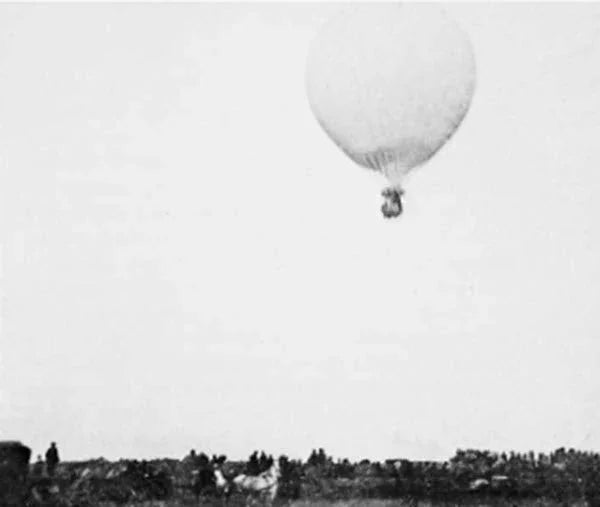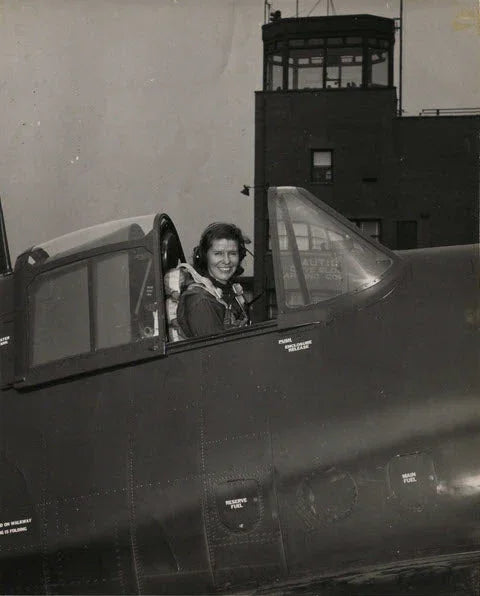Roscoe and Gilmore
In the 1890s budding aviators built the first piloted gliders with two wings, one wing stacked above the other.
But the dream of powered manned flight lived on.
The first successful powered aircraft flight occurred on December 17th, 1903 by the Wright Brothers. The Wright Flyer also had two wings, one stacked above the others.
The race was on, and this flight unleashed the steady growth in aircraft design.
World War I:
By World War I most of the aircraft being flown by the different military air corps, were biplanes like:
- The German Albatros D.I. fighter,
- Fokker Dr-1 fighter,
- Gotha G.V. bomber,
- The French Nieruport 23 C.1 fighter,
- The British Bristol F.2 fighter,
- Spad S.VII fighter,
- Sopwith Camel F.1 fighter
After WWI civilian aviation really took off as returning military pilots barnstormed the country with used military aircraft, exciting the public and encouraging many young men to look to the skies.
In order to promote aircraft design and performance many organizations and individuals offered cash prizes and trophies for speed races and long distance flights.
This encouraged pilots and aircraft manufacturers to design, modify and fly newer and faster aircraft.
Flying airplanes presented pilots with many dangers, among which were the protection of their eyes.
Remember those trailing white scarves around the necks of those aviators?
They were used to wipe away the flying oil coming off the engines, and not a fashion statement!
Flying Googles
In the 1920s the U.S. Army Air Corps put out a bid for flying goggles, and the American Optical Company provided a quotation for their Airway Aviation Goggle.
In 1958 AO introduced the Flight Goggle 58 which was the first version of the modern square aviator sunglasses of today.
By the 1960's the American Optical Company's Original Pilot Sunglasses were the major supplier for U.S. Military Pilots.
Roscoe Turner
Roscoe Turner was one of those bit by the flying bug.
He was born on September 29, 1895 to a poor farm family just outside of Corinth, Mississippi.
He hated farming but was fascinated by fast machines and after completing the 10th grade he ran away from home to Memphis, TN.
There he became an auto mechanic. The aviation bug had not bit him yet.
He eventually joined the Army in WWI, at first in the Ambulance Corps and later in the aviation section where he gained some unofficial flying training in fixed wing aircrat.
The die was cast!
After the War he and Harry Runser, a former Army pilot, formed the Roscoe Turner Flying Circus.
For five years they toured the country with a Curtiss "Jenny" biplane performing 'death-defying' aerial tricks like wing walking and parachute jumping.
Turner was the aircraft mechanic, part time pilot, wing walker and parachute jumper.
Many of these flying circuses flew the famous Curtiss Jenny.
The Curtiss Jenny:

Roscoe Becomes Famous
Along the way the handsome Turner purchased a Sikorsky S-29A 14 passenger cabin aircraft and took the ladies of society for aerial tea flights and where he did airborne radio broadcasts.

Hollywood beckoned, and Turner became a move stuntman and actor.
Roscoe had a starring role in Howard Hugh's "Hells Angels" movie, playing a dashing British pilot.
In 1928 Turner began air racing, and in 1929 became the chief pilot for Nevada Airlines flying a Lockeed Vega between Los Angeles and Las Vegas. The airline folded in February of 1930.
Turner then convinced the Gilmore Oil Company to purchase a Lockheed Air Express racing aircraft and enter him in the air races.
Painted cream white with gold and red trim, the aircraft sported a lion head logo advertising Gilmore Red Lion products.
Fate interceeded when Turner saw a lion cub for sale in California.
He persuaded the onwer of the cub to give it to him in return for promoting his lion breeding farm.
He named the cub 'Gilmore' after the Gilmore Oil Company, and from that point on Gilmore was his companion of many of his highly publicized flights.
Roscoe Turner and Gilmore:

Throughout his career Turner set the following records:
- May 27, 1940 set the East-West transcontinental airspeed record;
- July 1, 1933 gained first place in the Bendix Trophy race from New York to LA; however, he was disqualified for a pylon rule;
- October 1933 placed third in the MacRobertson Air Race from Mildenhall airport in England to Melbourne, Australia;
- In 1934, 1938, and 1939 he won the Thompson Trophy, and he also one th Allegheny-Ludlum Trophy for a world record lap speed of 293 mph;
- After winning his 3rd Thompson Trophy he retired from air racing at the age of 43, saying "Racing is a young man's game. I'm 43"!
His flying career over, he starts the Turner Aviation Institute to train the flight instructors, pilots and mechanics that WWII would require.
Throughout the 50s and 60s he continued his flight school, aircraft sales and service facility in Indianapolis, IN.
Roscoe Turned died on June 23, 1970, and is enshrined in the National Aviation Hall of Fame.
In the meantime, keep your eyes safe and focused on what's ahead of you Hersch!







Leave a comment
This site is protected by hCaptcha and the hCaptcha Privacy Policy and Terms of Service apply.